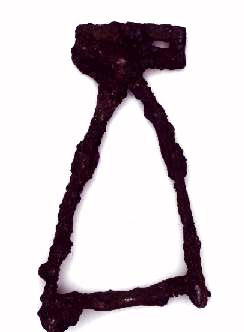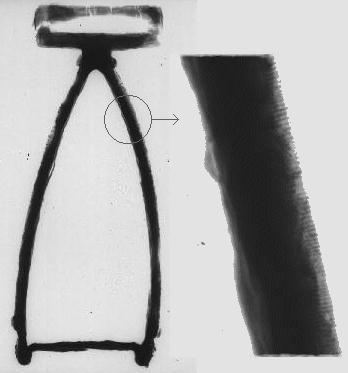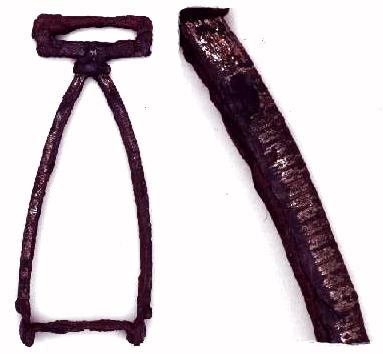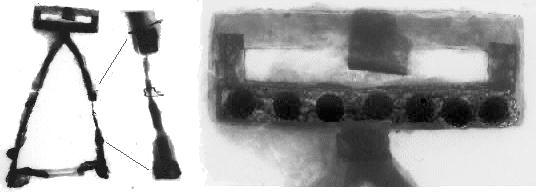 Invention
and deception
Invention
and deception


 Invention
and deception
Invention
and deceptionGlueing the pieces together and replacing missing parts is a part of
the conservator's work. Many ingenious methods and remarkable materials
have been used over the years. In the old days, conservators tried to complete
fragmentary objects. Today, conservators must document their repairs, so
that there can be no doubt about what is original.

A stirrup from St. Kongshøj. According to The National Museum's
register, 1873: "A pair of rusty and damaged stirrups....[which] seem
to have been silvered all over." There is no information about the
conservation process but a recent X-ray picture reveals that parts of the
foot plate were filled in at one time with plaster and that the stirrup
is held together and strengthened with steel wire. The silver inlay is
visible in the enlargement on the right.